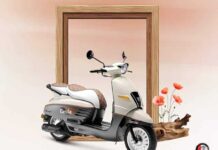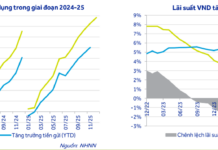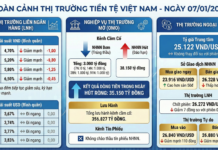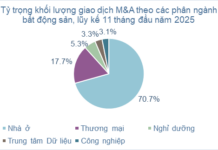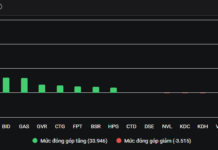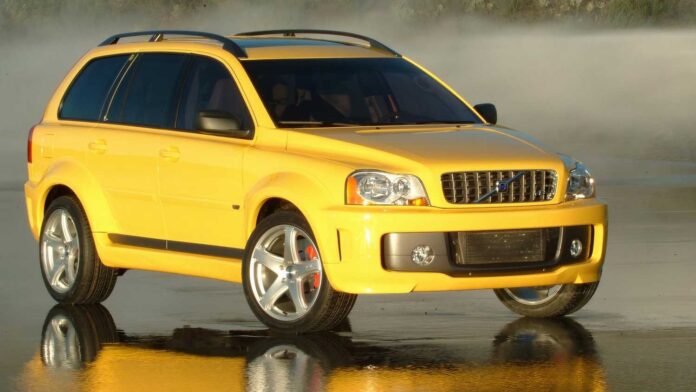The Volvo XC90 has become a household name in Vietnam after it saved its owner’s life in a recent accident at Phu My Bridge. But did you know that, aside from saving numerous lives, the XC90 also saved Volvo from bankruptcy not once, but twice?
Volvo’s Near-Death Experience
In the late 1990s, Volvo’s future hung by a thread. In 1999, Volvo’s leadership decided to sell its production division to focus on commercial vehicles. This split resulted in two entities: Volvo Group, manufacturing trucks, buses, and construction equipment, and Volvo Cars, the automotive division, which was acquired by Ford for $6.45 billion.

The first-generation Volvo XC90 was highly anticipated after the lackluster performance of previous projects such as the S60, V70, and XC70. Image source: CarBuzz
Under Ford’s ownership, Volvo expanded its lineup in the early 2000s. However, this strategy did not pay off, with sales figures in the United States falling short: 18,975 cars sold in 2002 and 17,330 in 2003. In Europe, the situation was even more dire, with a 40% sales decline from 2003 to 2004.
Financial woes also forced Volvo to withdraw from motorsports, further damaging its image. The brand was associated with safety but deemed boring, struggling to attract new customers.
The Debut of the Volvo XC90
However, with the rise in popularity of luxury SUVs during this period, Volvo saw an opportunity. They decided to develop a new model targeting this segment, and the XC90 was born in 2003. This gamble paid off, as the XC90 won numerous prestigious awards for the company.
Jeremy Clarkson, the renowned host of Top Gear, loved the Volvo XC90 so much that he bought five of them. He believed that no other luxury SUV at the time offered as much value as the Swedish SUV.
The Volvo XC90’s sales skyrocketed in the following two years (32,032 and 35,179 units, respectively) thanks to the addition of the Yamaha 4.4L V8 engine option. As a result, Volvo’s sales increased by 30% in Europe and tripled in North America.


The spacious and practical interior, along with its luxurious appeal, made the XC90 an instant favorite among families. Image source: Autocar
The XC90’s success was partly due to its timely launch. The US market was shifting from sedans and coupes to SUVs, and the XC90 was a safe choice as the first SUV equipped with rollover-preventing stability control technology.
Additionally, its spacious third row and cargo area were significant advantages over competitors like Land Rover. The powerful Yamaha V8 engine also contributed to its superior performance compared to other SUVs on the market.
The End of the Honeymoon
Despite the initial success of the XC90, Volvo’s sales began to plummet from 2008 onwards. From consistently selling around 90,000 cars per year, their sales figures dropped to 54,233 in 2008, 47,371 in 2009, and a meager 40,801 in 2010.
Once again, Volvo’s strategy under Ford proved misguided. They spread their investments too thin, neglecting their flagship model, the XC90, which gradually lost its competitive edge to newer rivals. For instance, while Volvo’s standard 3.2L I-6 engine produced 240 horsepower, the Ford Explorer, introduced later, boasted 290 horsepower as a base offering.

Volvo’s strategy of spreading their investments too thin led to a lack of focus on their core model, the XC90, causing it to lose its competitive edge. Image source: Wiki
Replicating Success
In 2011, Ford sold Volvo to Geely, a Chinese brand focused on reviving Lotus. Instead of cutting investments, Geely surprisingly granted Volvo independence and substantial financial resources to rebuild the brand. The second-generation Volvo XC90 is a testament to this new direction.
Built on the new SPA platform, which offers superior rigidity while being lightweight, the XC90 replicated the success of its predecessor while improving fuel efficiency.

The second-generation Volvo XC90 maintained stable sales throughout its life cycle, without the sales dip experienced by its predecessor towards the end of its run. Image source: Autocar
With minimal changes to the overall structure, the XC90 continues to excel in safety, consistently earning top safety ratings. Even in 2024, it received the Top Safety Pick+ award from the IIHS in North America, outperforming newer competitors and passing rigorous crash tests with flying colors.
The launch of the second-generation XC90 also helped Volvo regain its sales momentum. From selling just under 60,000 cars, they returned to the 80,000-90,000 range and consistently surpassed the 100,000 mark annually from 2019 onwards. The XC90 contributed significantly to these figures, with 39,920 units sold in 2023 alone.
What’s Next for the Volvo XC90?

While Volvo initially expected the EX90 to gradually replace the XC90, the latter’s strong sales performance has made this a challenging task. Image source: Whichcar
Currently, Volvo has introduced the EX90, an electric SUV intended to succeed the XC90. However, with the recent slowdown in electric vehicle sales, the EX90 is not yet positioned to carry Volvo’s global sales on its own.
In Vietnam, the Volvo XC90 has also made a strong impression, winning twice at the Car Choice Awards (CCA) in the “Representative Luxury Car for Families” and “Luxury Car for Large Families 2022” categories. The XC90 is expected to be a strong contender again this year, with the Better Choice Awards (BCA) set to kick off in September and the gala scheduled for October.

